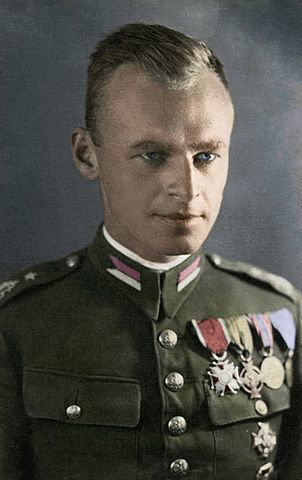Suicide
When Does Making the Ultimate Sacrifice Make Sense?
Explaining the psychology of suicide terrorism and other extreme self-sacrifice
Posted April 22, 2018

A suicide bomber crashes a car loaded with explosives into a bus full of government workers in Kabul in 2017.
A Polish resistance fighter purposely gets arrested to infiltrate the Nazi concentration camp at Auschwitz to aid the Allied liberation movement in 1940.
A kamikaze pilot flies into the US's Hobbs Victory cargo ship anchored near Okinawa in 1945.
A small group of Spartan infantry futilely attack an overwhelming Persian force at Thermopylae in 480 BCE.
Why do people make an “extreme self-sacrifice”? You don’t have to be a trained psychologist to wonder in earnest why some people sacrifice themselves for their group. Basic human nature leads many of us to ponder this.
EXPLANATIONS AND A CHALLENGE TO DARWIN
![Naval History & Heritage Command [Public domain], via Wikimedia Commons Naval History & Heritage Command [Public domain], via Wikimedia Commons](https://cdn.psychologytoday.com/sites/default/files/styles/article-inline-half-caption/public/field_blog_entry_images/2018-04/kamikaze_.jpg?itok=TwmKYbil)
Some researchers claim individuals who sacrifice themselves for their group are motivated by religious or ideological zeal. Others suggest it may not really be self-sacrifice, it may be mental disorder having nothing to do with the individual’s group.
But questions about self-destruction (e.g., extreme self-sacrifice and suicide) are particularly important for proponents of evolution. Because as Darwin put it:
Natural selection will never produce in a being any structure more injurious than beneficial to that being, for natural selection acts solely by and for the good of each.
-- Charles Darwin, The Origin of Species by Means of Natural Selection
When fully developed, Darwin’s theory suggests that organisms are powerfully driven to survive and reproduce. Humans who consciously sacrifice themselves undermine their own survival and ability to reproduce and, from a scientific perspective, challenge the theory of evolution.
One explanation consistent with evolutionary theory is kin selection. When an individual has low reproductive potential, the individual may actually increase her or his genetic contribution to the species by not consuming resources that closely related genetic kin can consume instead. In other words, by self-destruction the individual is strengthening others with shared genes and “reproducing” her or his genes through them.
For example, in one type of Brazilian ant a few workers stay outside the colony’s nest at the end of the day to seal the entrance closed for the night exposing themselves to the harsh night-time environment, which typically leads to their deaths.
A “SHARED ESSENCE”
Oxford anthropologist Harvey Whitehouse argues that another evolutionary mechanism is at play. In an article in Behavioral and Brain Sciences, he says that people are willing to give their lives for the sake of their groups because they are driven by “identity fusion.” People experiencing identity fusion hold a “shared essence” and “visceral sense of oneness with the group” to the point that “the survival of the group constitutes a form of personal immortality.” As a result, the boundary between personal and group identity is porous and an attack on the group is perceived as an attack on the fused individual.

Whitehouse says there are two pathways to an individual’s fusion with a group. One pathway, reminiscent of kin selection but not the same, is perceived biological similarity to those in the group. For example, identical twins, who are nearly genetically identical, report greater fusion with each other than fraternal twins, who share about half of their genetic material. Of course, relying on genetic similarity greatly limits the groups an individual can fuse with.
More interestingly and expansively, the second pathway involves shared transformative experiences with other group members. These include emotionally intense experiences such as natural or man-made disasters (e.g., war) and collective rituals. Research suggests that groups bonded this way exhibit greater willingness to fight and die when the group is attacked. Individuals in these groups experience an urgent desire to protect the group that they perceive as an act of self-defense.
MANUFACTURING FUSION
Groups that require extreme commitment can manufacture these transformative experiences. Suicide bombers often face intense initiation rituals. Kamikaze trainees endured “incredibly strenuous training, coupled with cruel and torturous corporal punishment as a daily routine.” Much the same can be said about the lives of Spartan boys and young men, who were trained to endure a warrior’s life of cold, hunger, and pain through outdoor living, restricted diets, and ritualistic beatings.
SATISFACTION
In a lot of ways, Professor Whitehouse’s explanation for extreme self-sacrifice is satisfying. People sacrifice themselves for their group because they see self-destruction as an act of self-defense. And, of course, people will act to defend themselves—they are, after all, driven to survive and reproduce. I think evolution survives this test.
References
Whitehouse, Harvey. 2018. "Dying for the group: Towards a general theory of extreme self-sacrifice." Behavioral and Brain Sciences https://doi.org/10.1017/S0140525X18000249.




